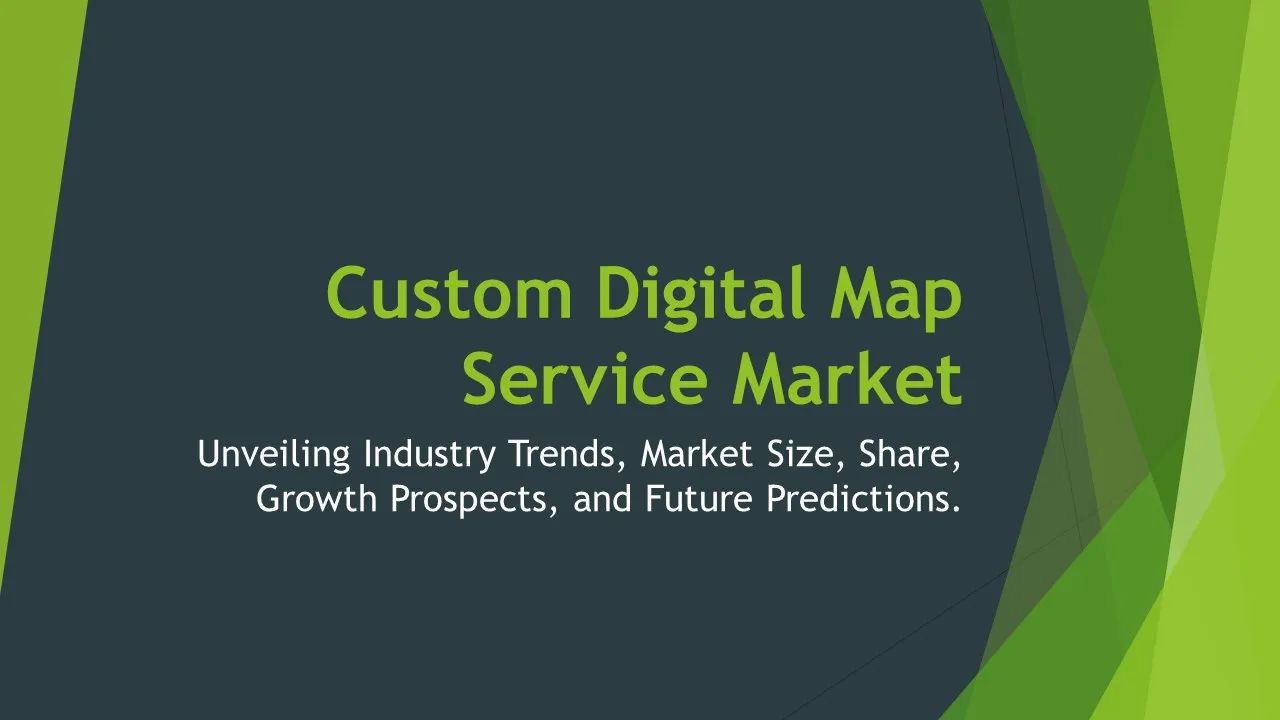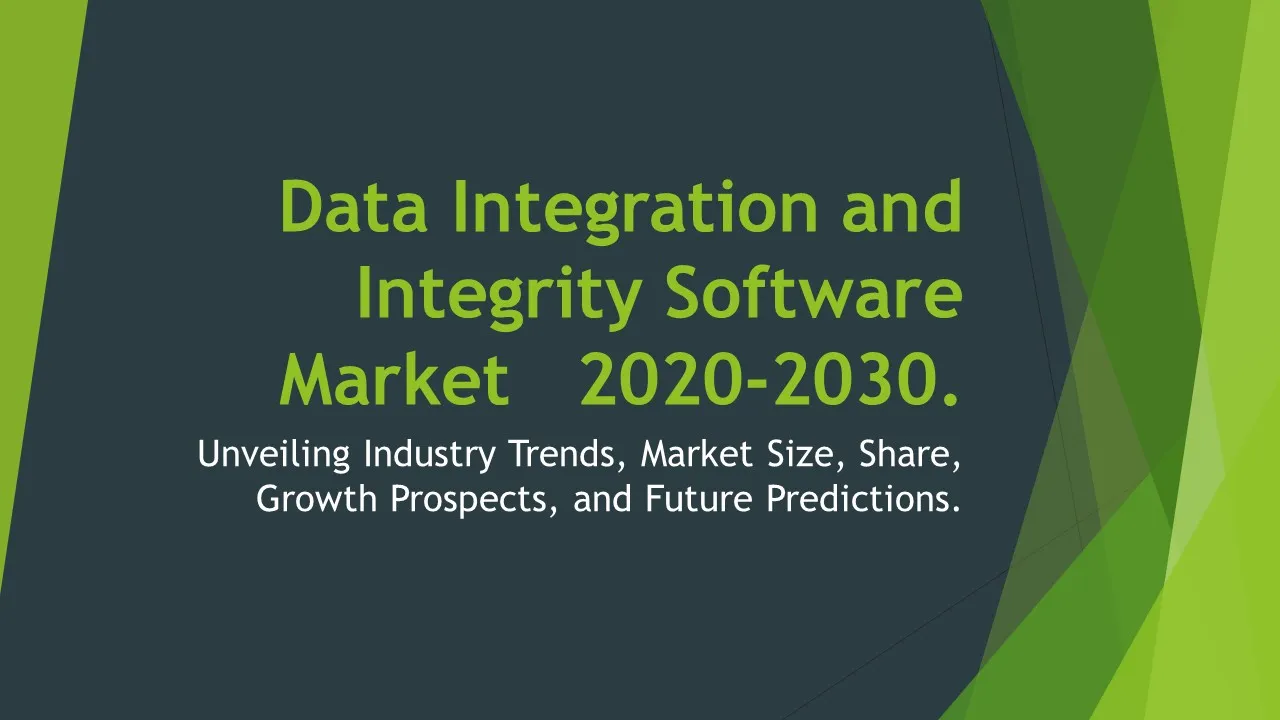Spending In Digital Customer Experience amp Engagement Solutions
Digital Customer Experience & Engagement Solutions Market Segments - by Solution Type (Customer Relationship Management, Customer Communication Management, Customer Analytics, Customer Self-Service, and Omnichannel Engagement), Industry Vertical (Retail, BFSI, Healthcare, IT & Telecom, and Others), Deployment Mode (Cloud-based, On-premises), Organization Size (SMEs, Large Enterprises), and Region (North America, Europe, Asia Pacific, Latin America, Middle East & Africa) - Global Industry Analysis, Growth, Share, Size, Trends, and Forecast 2025-2035
- Report Preview
- Table Of Content
- Segments
- Methodology
Spending In Digital Customer Experience & Engagement Solutions Market Outlook
The global Digital Customer Experience and Engagement Solutions market was valued at approximately $11 billion in 2025 and is projected to reach around $25 billion by 2035, with a compound annual growth rate (CAGR) of about 8.5% during the forecast period. One of the primary growth factors for this market is the increasing emphasis on enhancing customer satisfaction and loyalty through personalized interactions. Moreover, the rapid digital transformation across industries has further propelled businesses to invest in advanced solutions that facilitate real-time customer engagement and seamless communication. The proliferation of mobile devices and the rise of social media platforms have also contributed significantly, as they enable companies to reach customers more effectively and provide tailored experiences. Additionally, the growing demand for data-driven insights, to understand customer behavior and preferences better, is driving the adoption of sophisticated analytics tools within the digital customer experience landscape.
Growth Factor of the Market
The growth of the Digital Customer Experience and Engagement Solutions market is fueled by several interrelated factors. Firstly, the rise of e-commerce and online services has compelled businesses to prioritize digital engagement, as customers increasingly expect seamless online interactions. The COVID-19 pandemic has further accelerated this shift, with a significant number of consumers opting for digital channels for shopping and service inquiries. Additionally, advancements in artificial intelligence and machine learning technologies are enabling organizations to automate customer interactions and provide personalized experiences at scale. The need for businesses to differentiate themselves in a crowded marketplace has also spurred investment in innovative customer engagement solutions. Furthermore, businesses are recognizing the importance of omnichannel strategies that provide a cohesive experience across various touchpoints, thus allowing for comprehensive customer engagement.
Key Highlights of the Market
- Strong growth projected with a CAGR of 8.5% from 2025 to 2035.
- Significant increase in demand for personalized customer engagement solutions.
- Rapid adoption of AI and analytics technologies to enhance customer insights.
- Growing emphasis on omnichannel strategies for improved customer experience.
- Expansion of e-commerce driving increased investment in digital solutions.
By Solution Type
Customer Relationship Management:
Customer Relationship Management (CRM) solutions have become essential for businesses aiming to manage interactions with customers more effectively. These tools allow organizations to consolidate customer data from various sources to create a comprehensive view of customer preferences and behaviors. By implementing CRM systems, businesses can enhance customer service, streamline processes, and improve communication. Furthermore, CRM analytics enable companies to predict customer needs, facilitating timely and targeted marketing efforts. The growing trend of integrating CRM with other digital engagement solutions is also enhancing its functionality, allowing for a more cohesive approach to customer relationship management.
Customer Communication Management:
Customer Communication Management (CCM) solutions are increasingly vital as organizations seek to engage customers through multiple communication channels. CCM tools facilitate personalized communication by allowing businesses to design, manage, and deliver messages across various platforms such as email, SMS, and social media. The rise of customer expectations for timely and relevant communication has driven the demand for sophisticated CCM systems that can automate and streamline messaging processes. Additionally, the ability to track customer engagement metrics through these systems provides valuable insights, enabling organizations to refine their communication strategies continuously. As a result, the CCM segment is witnessing significant growth within the digital customer experience landscape.
Customer Analytics:
Customer Analytics refers to the practice of collecting and analyzing customer data to gain insights into their behaviors and preferences. This segment has gained immense traction as businesses harness data to enhance customer engagement and optimize marketing strategies. By leveraging advanced analytics tools, organizations can segment their customer base, predict future behaviors, and tailor experiences to individual needs. The demand for real-time analytics is particularly high, as businesses strive to make informed decisions promptly. As competition intensifies, the ability to effectively utilize customer data for strategic advantage highlights the growing importance of this segment within digital customer experience solutions.
Customer Self-Service:
Customer Self-Service solutions allow customers to resolve their inquiries independently, significantly enhancing the overall customer experience. These solutions, which include FAQs, chatbots, and knowledge bases, empower customers to find information and answers without the need for direct interaction with customer service representatives. The increasing preference for self-service options is driven by the desire for convenience and instant access to information. Furthermore, self-service solutions reduce the workload on customer support teams, allowing them to focus on more complex issues. As organizations strive to create efficient and user-friendly platforms, customer self-service solutions are becoming an integral part of the digital customer experience strategy.
Omnichannel Engagement:
Omnichannel Engagement encompasses a comprehensive approach to customer interactions across multiple channels, ensuring a seamless experience regardless of the touchpoint. This strategy is crucial in today’s digital landscape, where customers engage through various platforms, including mobile apps, websites, social media, and in-store visits. Businesses are increasingly investing in omnichannel solutions to provide a consistent and integrated customer experience, promoting brand loyalty and satisfaction. The ability to collect and analyze data from all these channels enables organizations to understand customer journeys better and tailor their marketing efforts effectively. As the importance of cohesive customer engagement continues to grow, the demand for robust omnichannel solutions is expected to rise significantly.
By Industry Vertical
Retail:
The retail industry is a major beneficiary of Digital Customer Experience and Engagement Solutions, as it thrives on customer engagement and satisfaction. Retailers are increasingly utilizing these solutions to enhance the shopping experience, both online and in physical stores. With the rise of e-commerce, retailers are compelled to adopt digital strategies that enable personalized marketing and streamlined customer interactions. Solutions such as CRM and analytics allow retailers to understand shopping behaviors, tailor promotions, and optimize inventory management based on customer preferences. The integration of omnichannel engagement strategies enables a seamless transition between online and offline shopping experiences, which is vital for retaining customers in a competitive market.
BFSI:
The Banking, Financial Services, and Insurance (BFSI) sector is also experiencing a transformation through digital customer engagement solutions. Institutions within this vertical are leveraging these technologies to enhance customer service and improve operational efficiency. With increasing regulatory requirements and customer expectations for personalized services, BFSI organizations are adopting CRM and communication management tools to streamline operations and provide tailored financial solutions. Enhanced customer analytics allow these institutions to anticipate customer needs, thereby offering more relevant products and services. As digital banking continues to proliferate, the BFSI sector is increasingly focused on utilizing digital customer experience solutions to maintain competitiveness and customer satisfaction.
Healthcare:
The healthcare industry is rapidly adopting Digital Customer Experience and Engagement Solutions to improve patient engagement and satisfaction. Providers are leveraging these tools to deliver personalized health information, appointment reminders, and follow-up communications. By utilizing analytics, healthcare organizations can better understand patient preferences and behaviors, allowing them to tailor services accordingly. The emphasis on patient-centered care has made digital engagement solutions critical for healthcare providers seeking to enhance the patient experience. Additionally, the integration of self-service portals enables patients to access their medical records, schedule appointments, and communicate with healthcare professionals, thus promoting greater patient autonomy and satisfaction.
IT & Telecom:
The IT and Telecom industry is witnessing significant investments in Digital Customer Experience and Engagement Solutions to manage customer expectations and satisfaction effectively. As the demand for connectivity and digital services rises, organizations are focusing on enhancing customer interactions through advanced communication management and analytics. The ability to provide real-time support and personalized experiences is becoming essential in retaining customers in this highly competitive sector. IT and Telecom companies are also leveraging omnichannel engagement strategies to facilitate seamless communication across various platforms. As technology continues to evolve, the integration of these digital solutions is expected to play a vital role in shaping customer experiences within the industry.
Others:
Beyond the primary sectors, various other industries are also adopting Digital Customer Experience and Engagement Solutions to enhance customer interactions. Sectors such as travel and hospitality, education, and manufacturing are recognizing the value of personalized engagement and streamlined communication. In travel and hospitality, for instance, businesses are utilizing CRM solutions to manage guest relationships and improve service delivery. Educational institutions are adopting self-service portals to facilitate student engagement and streamline administrative processes. As more industries recognize the importance of customer experience, the demand for digital engagement solutions continues to expand across various sectors.
By Deployment Mode
Cloud-based:
Cloud-based deployment of Digital Customer Experience and Engagement Solutions is becoming increasingly prevalent due to its numerous advantages. Organizations are gravitating towards cloud solutions because they offer scalability, flexibility, and cost-effectiveness. With cloud-based systems, businesses can quickly adapt to evolving customer needs and market dynamics without the burden of significant upfront investments in infrastructure. Additionally, cloud solutions facilitate real-time data access, enabling companies to analyze customer interactions and deliver personalized experiences promptly. The increasing reliance on remote work and digital operations has further accelerated the adoption of cloud-based solutions, making them a preferred choice for many organizations seeking to enhance their customer engagement strategies.
On-premises:
On-premises deployment of Digital Customer Experience and Engagement Solutions remains relevant, especially for organizations that prioritize data security and control over their systems. Companies in regulated industries or those with strict compliance requirements often prefer on-premises solutions to maintain full oversight of their customer data. While on-premises deployments may require higher initial investment costs and ongoing maintenance, they provide organizations with the ability to customize and configure their systems to meet specific needs. Furthermore, businesses that have existing IT infrastructure may opt for on-premises solutions to leverage their current resources while implementing digital engagement strategies. As such, the on-premises segment continues to play a significant role in the overall market landscape.
By Organization Size
SMEs:
Small and Medium Enterprises (SMEs) are increasingly embracing Digital Customer Experience and Engagement Solutions to compete effectively against larger organizations. With limited resources, SMEs are focusing on solutions that offer affordability and ease of implementation. Cloud-based platforms are particularly attractive for these businesses, as they provide access to advanced technologies without the need for extensive IT infrastructure. By leveraging customer analytics and communication tools, SMEs can personalize customer interactions, fostering loyalty and repeat business. Additionally, as SMEs recognize the importance of customer-centric strategies, the adoption of digital engagement solutions is becoming essential for their growth and sustainability.
Large Enterprises:
Large Enterprises are at the forefront of adopting Digital Customer Experience and Engagement Solutions, given their vast customer bases and complex operational needs. These organizations often invest heavily in advanced technologies such as AI, machine learning, and omnichannel engagement platforms to enhance their customer interactions. The ability to analyze large volumes of customer data allows these enterprises to gain deeper insights into customer preferences and behaviors, enabling them to tailor their products and services effectively. Furthermore, large enterprises benefit from the scalability of digital solutions, allowing them to adapt to changing market dynamics and customer expectations while maintaining a competitive edge within their industries.
By Region
The North America region is currently leading in the adoption of Digital Customer Experience and Engagement Solutions, accounting for approximately 40% of the global market share. The presence of numerous technology providers, coupled with a high level of digital maturity among businesses, has fueled this growth. In this region, organizations are increasingly investing in advanced solutions to enhance customer interactions and drive business growth. Additionally, the region is witnessing an increasing demand for omnichannel engagement solutions, as companies seek to provide seamless customer experiences across various platforms. The North American market is projected to grow at a CAGR of 8% through 2035, driven by continuous advancements in technology and a strong emphasis on customer-centric strategies.
Europe is another significant market for Digital Customer Experience and Engagement Solutions, contributing around 30% to the global market share. The region has observed a steady increase in digital engagement as businesses prioritize enhancing customer experiences amidst competitive pressures. Countries such as the UK, Germany, and France are leading the charge in implementing innovative solutions that facilitate personalized interactions. Additionally, the European market is driven by regulatory requirements surrounding customer data protection and privacy, prompting organizations to adopt secure and compliant solutions. As the demand for digital transformation persists, the European market is expected to experience considerable growth, with a CAGR of 7.5% projected through 2035.
Opportunities
The Digital Customer Experience and Engagement Solutions market presents several lucrative opportunities for businesses looking to innovate and enhance their customer interactions. One significant opportunity lies in integrating emerging technologies such as artificial intelligence and machine learning into customer engagement platforms. By harnessing the power of these technologies, organizations can gain deeper insights into customer behaviors, enabling them to predict future needs and tailor their offerings accordingly. Furthermore, the rise of social media and messaging apps has opened new avenues for customer engagement, allowing businesses to reach customers through their preferred channels. Embracing these trends can empower organizations to create more personalized, interactive experiences that drive customer loyalty and retention.
Moreover, the growing emphasis on customer-centricity emphasizes the need for businesses to invest in comprehensive training and development programs for their employees. By empowering staff with the skills necessary to utilize digital engagement tools effectively, organizations can enhance their ability to provide exceptional customer service. The increasing focus on sustainability and corporate social responsibility is also creating opportunities for businesses to differentiate themselves by aligning their customer engagement strategies with ethical practices. As consumers become more socially conscious, organizations that prioritize transparency and sustainability in their interactions are likely to attract a loyal customer base. Overall, the evolving landscape of customer experience offers numerous opportunities for businesses willing to innovate and adapt.
Threats
Despite the promising growth potential in the Digital Customer Experience and Engagement Solutions market, several threats could pose challenges to industry players. One of the primary concerns is the rising competition among vendors providing similar solutions, leading to price wars and reduced profit margins. As the market becomes more saturated, companies may struggle to differentiate themselves and establish a strong value proposition. Additionally, the rapid pace of technological advancements means that organizations must continuously innovate and upgrade their solutions, incurring significant costs in research and development. Organizations that fail to keep up with the latest trends may risk losing their competitive edge, making it imperative for businesses to remain agile and adaptable.
Another significant threat is the increasing prevalence of data privacy regulations, such as GDPR and CCPA, which impose stringent requirements on how organizations handle customer data. Compliance with these regulations can be complex and costly, leading some organizations to hesitate in adopting comprehensive digital engagement solutions. Moreover, cybersecurity threats continue to pose a risk to customer data and trust, as breaches can result in significant reputational damage and financial losses. Companies must prioritize robust security measures to protect customer information and maintain trust, adding additional layers of complexity to their digital engagement strategies. Overall, navigating these threats effectively is crucial for organizations to thrive in the competitive landscape of digital customer experience solutions.
Competitor Outlook
- Salesforce
- Adobe
- Oracle
- SAP
- Zendesk
- HubSpot
- Freshworks
- Qualtrics
- Microsoft
- Verint
- Genesys
- ServiceNow
- Zoho Corporation
- HubSpot
- Intercom
The competitive landscape of the Digital Customer Experience and Engagement Solutions market is characterized by the presence of several key players, each vying for market share through innovation and strategic partnerships. Companies such as Salesforce and Adobe have established themselves as leaders by offering comprehensive solutions that integrate customer relationship management, analytics, and communication tools. Their ability to provide scalable and customizable solutions has made them popular among various sectors, including retail, finance, and healthcare. Furthermore, these organizations are continually enhancing their offerings through acquisitions and collaborations, aiming to expand their capabilities and address the evolving needs of customers.
Other notable players, such as Oracle and SAP, are also focusing on integrating advanced technologies like artificial intelligence and machine learning into their customer engagement platforms. By leveraging these technologies, they aim to provide businesses with deeper insights into customer behavior, enabling personalized marketing strategies. Moreover, the emergence of cloud-based solutions has allowed these companies to offer flexible deployment options, catering to the diverse needs of organizations of all sizes. As competition intensifies, many companies are also investing in research and development to stay ahead of industry trends and enhance their product offerings.
Additionally, companies like Zendesk, HubSpot, and Freshworks are gaining traction by providing user-friendly and affordable solutions tailored for small and medium enterprises (SMEs). These companies emphasize simplicity and ease of use, allowing SMEs to leverage digital engagement tools without extensive IT resources. As SMEs continue to recognize the importance of enhancing customer experiences, the demand for these solutions is expected to grow. The competitive landscape is dynamic and ever-evolving, with organizations continually striving to differentiate themselves through innovation and customer-centric strategies.
1 Appendix
- 1.1 List of Tables
- 1.2 List of Figures
2 Introduction
- 2.1 Market Definition
- 2.2 Scope of the Report
- 2.3 Study Assumptions
- 2.4 Base Currency & Forecast Periods
3 Market Dynamics
- 3.1 Market Growth Factors
- 3.2 Economic & Global Events
- 3.3 Innovation Trends
- 3.4 Supply Chain Analysis
4 Consumer Behavior
- 4.1 Market Trends
- 4.2 Pricing Analysis
- 4.3 Buyer Insights
5 Key Player Profiles
- 5.1 SAP
- 5.1.1 Business Overview
- 5.1.2 Products & Services
- 5.1.3 Financials
- 5.1.4 Recent Developments
- 5.1.5 SWOT Analysis
- 5.2 Adobe
- 5.2.1 Business Overview
- 5.2.2 Products & Services
- 5.2.3 Financials
- 5.2.4 Recent Developments
- 5.2.5 SWOT Analysis
- 5.3 Oracle
- 5.3.1 Business Overview
- 5.3.2 Products & Services
- 5.3.3 Financials
- 5.3.4 Recent Developments
- 5.3.5 SWOT Analysis
- 5.4 Verint
- 5.4.1 Business Overview
- 5.4.2 Products & Services
- 5.4.3 Financials
- 5.4.4 Recent Developments
- 5.4.5 SWOT Analysis
- 5.5 Genesys
- 5.5.1 Business Overview
- 5.5.2 Products & Services
- 5.5.3 Financials
- 5.5.4 Recent Developments
- 5.5.5 SWOT Analysis
- 5.6 HubSpot
- 5.6.1 Business Overview
- 5.6.2 Products & Services
- 5.6.3 Financials
- 5.6.4 Recent Developments
- 5.6.5 SWOT Analysis
- 5.7 Zendesk
- 5.7.1 Business Overview
- 5.7.2 Products & Services
- 5.7.3 Financials
- 5.7.4 Recent Developments
- 5.7.5 SWOT Analysis
- 5.8 Intercom
- 5.8.1 Business Overview
- 5.8.2 Products & Services
- 5.8.3 Financials
- 5.8.4 Recent Developments
- 5.8.5 SWOT Analysis
- 5.9 Microsoft
- 5.9.1 Business Overview
- 5.9.2 Products & Services
- 5.9.3 Financials
- 5.9.4 Recent Developments
- 5.9.5 SWOT Analysis
- 5.10 Qualtrics
- 5.10.1 Business Overview
- 5.10.2 Products & Services
- 5.10.3 Financials
- 5.10.4 Recent Developments
- 5.10.5 SWOT Analysis
- 5.11 Freshworks
- 5.11.1 Business Overview
- 5.11.2 Products & Services
- 5.11.3 Financials
- 5.11.4 Recent Developments
- 5.11.5 SWOT Analysis
- 5.12 Salesforce
- 5.12.1 Business Overview
- 5.12.2 Products & Services
- 5.12.3 Financials
- 5.12.4 Recent Developments
- 5.12.5 SWOT Analysis
- 5.13 ServiceNow
- 5.13.1 Business Overview
- 5.13.2 Products & Services
- 5.13.3 Financials
- 5.13.4 Recent Developments
- 5.13.5 SWOT Analysis
- 5.14 Zoho Corporation
- 5.14.1 Business Overview
- 5.14.2 Products & Services
- 5.14.3 Financials
- 5.14.4 Recent Developments
- 5.14.5 SWOT Analysis
- 5.1 SAP
6 Market Segmentation
- 6.1 Spending In Digital Customer Experience amp Engagement Solutions Market, By Solution Type
- 6.1.1 Customer Relationship Management
- 6.1.2 Customer Communication Management
- 6.1.3 Customer Analytics
- 6.1.4 Customer Self-Service
- 6.1.5 Omnichannel Engagement
- 6.2 Spending In Digital Customer Experience amp Engagement Solutions Market, By Deployment Mode
- 6.2.1 Cloud-based
- 6.2.2 On-premises
- 6.3 Spending In Digital Customer Experience amp Engagement Solutions Market, By Industry Vertical
- 6.3.1 Retail
- 6.3.2 BFSI
- 6.3.3 Healthcare
- 6.3.4 IT & Telecom
- 6.3.5 Others
- 6.1 Spending In Digital Customer Experience amp Engagement Solutions Market, By Solution Type
7 Competitive Analysis
- 7.1 Key Player Comparison
- 7.2 Market Share Analysis
- 7.3 Investment Trends
- 7.4 SWOT Analysis
8 Research Methodology
- 8.1 Analysis Design
- 8.2 Research Phases
- 8.3 Study Timeline
9 Future Market Outlook
- 9.1 Growth Forecast
- 9.2 Market Evolution
10 Geographical Overview
- 10.1 Europe - Market Analysis
- 10.1.1 By Country
- 10.1.1.1 UK
- 10.1.1.2 France
- 10.1.1.3 Germany
- 10.1.1.4 Spain
- 10.1.1.5 Italy
- 10.1.1 By Country
- 10.2 Asia Pacific - Market Analysis
- 10.2.1 By Country
- 10.2.1.1 India
- 10.2.1.2 China
- 10.2.1.3 Japan
- 10.2.1.4 South Korea
- 10.2.1 By Country
- 10.3 Latin America - Market Analysis
- 10.3.1 By Country
- 10.3.1.1 Brazil
- 10.3.1.2 Argentina
- 10.3.1.3 Mexico
- 10.3.1 By Country
- 10.4 North America - Market Analysis
- 10.4.1 By Country
- 10.4.1.1 USA
- 10.4.1.2 Canada
- 10.4.1 By Country
- 10.5 Middle East & Africa - Market Analysis
- 10.5.1 By Country
- 10.5.1.1 Middle East
- 10.5.1.2 Africa
- 10.5.1 By Country
- 10.6 Spending In Digital Customer Experience amp Engagement Solutions Market by Region
- 10.1 Europe - Market Analysis
11 Global Economic Factors
- 11.1 Inflation Impact
- 11.2 Trade Policies
12 Technology & Innovation
- 12.1 Emerging Technologies
- 12.2 AI & Digital Trends
- 12.3 Patent Research
13 Investment & Market Growth
- 13.1 Funding Trends
- 13.2 Future Market Projections
14 Market Overview & Key Insights
- 14.1 Executive Summary
- 14.2 Key Trends
- 14.3 Market Challenges
- 14.4 Regulatory Landscape
Segments Analyzed in the Report
The global Spending In Digital Customer Experience amp Engagement Solutions market is categorized based on
By Solution Type
- Customer Relationship Management
- Customer Communication Management
- Customer Analytics
- Customer Self-Service
- Omnichannel Engagement
By Industry Vertical
- Retail
- BFSI
- Healthcare
- IT & Telecom
- Others
By Deployment Mode
- Cloud-based
- On-premises
By Region
- North America
- Europe
- Asia Pacific
- Latin America
- Middle East & Africa
Key Players
- Salesforce
- Adobe
- Oracle
- SAP
- Zendesk
- HubSpot
- Freshworks
- Qualtrics
- Microsoft
- Verint
- Genesys
- ServiceNow
- Zoho Corporation
- HubSpot
- Intercom
- Publish Date : Jan 21 ,2025
- Report ID : IT-69080
- No. Of Pages : 100
- Format : |
- Ratings : 4.5 (110 Reviews)
Related reports









